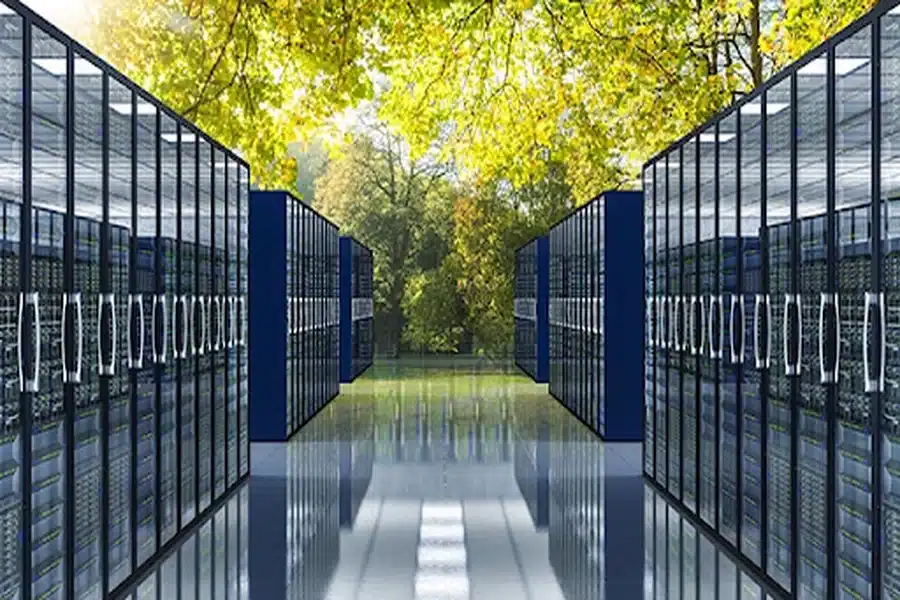Singapore – April 2025 — Singapore isn’t just a global financial hub. It’s also one of Asia’s most strategically positioned digital nerve centers, with over 70 operational data centers supporting everything from regional fintech giants to AI research labs. But hosting terabytes of data in the tropics isn’t without its challenges.
The country’s consistently hot and humid climate, while ideal for tropical getaways, creates a harsh environment for infrastructure traditionally designed for cooler, drier locales. For data centers running Singapore dedicated servers, this means rethinking cooling, energy efficiency, and long-term hardware sustainability.
1. Challenges of Singapore’s tropical climate
High heat & humidity
Singapore’s weather is remarkably consistent. Daily highs hover around 30–32°C (86–89°F), and relative humidity regularly spikes to 80–90%. While comfortable for human life, these conditions are tough on data center operations.
According to IDA Singapore, tropical climates can increase cooling energy consumption by 10–15% compared to temperate environments like Amsterdam or Frankfurt. In Singapore, cooling often accounts for over 40% of a data center’s total power use—significantly higher than the global average of 30% (Uptime Institute).
Humidity introduces its own set of issues: condensation, corrosion, and component degradation. These are not theoretical risks—they’re operational realities that must be mitigated 24/7.
2. Adaptive cooling solutions
In response to the tropical pressure, Singapore has become a sandbox for cooling innovation. Operators here are not just adapting—they’re leading.
Liquid cooling (direct-to-chip & immersion)
One of the most promising technologies is liquid cooling, which can be 30–50% more efficient than traditional air systems. Companies like ST Telemedia and Equinix SG3 have implemented direct-to-chip cooling, where heat is drawn directly from CPUs via fluid loops, bypassing inefficient air handling entirely.
Immersion cooling—where servers are submerged in thermally conductive fluid—is also gaining traction, particularly for high-density AI and blockchain workloads.
Hot/cold aisle containment
This isn’t new, but in Singapore it’s non-negotiable. By physically separating hot and cold airflows, hot/cold aisle containment prevents recirculation, reducing the strain on CRAC (computer room air conditioning) units.
As Kenny Lee, lead engineer at a major Singapore-based cloud provider, puts it: “You can’t afford to let air mix freely here. You’d be paying double to cool it back down.”
Free cooling? Not really.
In cooler climates, data centers often leverage free cooling by using outdoor air. But in Singapore, wet-bulb temperatures are too high year-round for this to be viable. So, while Scandinavian data centers can cool with nature, Singapore must engineer its own microclimate.
3. Humidity & infrastructure risks
Corrosion control
High humidity is a slow killer of hardware. Corrosive buildup on metal components can lead to signal degradation, mechanical failure, and unrecoverable data loss.
That’s why Singapore-based facilities use stainless steel or specially coated materials in server racks and chassis. Additionally, industrial-grade dehumidifiers are installed in airflow paths to maintain balance.
Condensation mitigation
When cold surfaces meet humid air, condensation forms—posing a direct threat to sensitive electronics.
To counteract this, precision cooling systems maintain relative humidity between 45–55%, often with sensors adjusting conditions in real-time. Sealed cable conduits are another crucial measure, preventing moisture from creeping into critical connections.
4. Energy efficiency & sustainability
As Singapore grows its digital footprint, sustainability isn’t a luxury—it’s a mandate.
Solar integration
Despite space constraints, data centers like Keppel DC REIT are integrating rooftop solar panels to offset energy costs associated with cooling. While this won’t replace grid power, it provides a measurable dent in carbon output.
PUE: A Singapore benchmark
PUE (Power Usage Effectiveness) is the metric of choice to gauge energy efficiency. The global average hovers around 1.6, but top-tier Singapore facilities are achieving 1.3–1.5, thanks to aggressive optimization and smart design.
This isn’t just a bragging right—it’s a regulatory expectation. The Building and Construction Authority (BCA) mandates Green Mark Certification for new builds, requiring specific benchmarks in energy efficiency and environmental design.
5. Future innovations
Singapore isn’t just reacting—it’s pioneering.
AI-driven cooling
In 2023, Google’s DeepMind ran an experimental AI cooling trial at its Singapore facility. The result? A 40% reduction in cooling energy use, with machine learning dynamically adjusting airflow and coolant based on workload patterns and environmental input.
Expect more data centers to follow suit—especially as AI becomes more mainstream in infrastructure management.
Underground and underwater exploration
With limited land and rising temperatures, non-traditional cooling environments are becoming part of the national conversation.
Singapore has shown interest in subterranean data centers, leveraging the stable underground temperatures to lower cooling loads. Meanwhile, the concept of underwater data centers, like Microsoft’s Project Natick, is also being discussed in tropical contexts, where ocean thermals could be a long-term cooling solution.
Not just about climate—about strategy
Climate matters, but it’s not the only driver. Latency to Asian markets, political stability, and connectivity infrastructure make Singapore one of the most attractive locations in Asia for server hosting. For businesses looking for high-performance hosting in the region, a Singapore dedicated server is a logical first step—especially when backed by facilities optimized for the local environment.
Whether you’re streaming high-resolution video, running complex analytics workloads, or scaling a fintech app, your infrastructure in Singapore must be built not just to withstand the climate, but to thrive in it.
Singapore’s tropical climate may be unforgiving, but it’s also a catalyst for innovation. From liquid-cooled racks to AI-optimized airflow, the nation’s data center industry is turning environmental adversity into a showcase of modern engineering.
As demand for regional compute power surges, the future of data center design in Southeast Asia will be shaped right here—in the steamy heart of the tropics.




